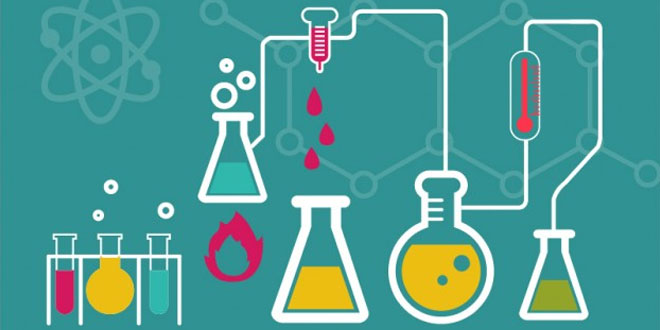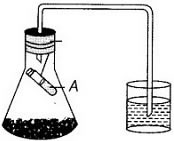10 Class Science Periodic Test II (2018-19)
Time: 3 hour
M.M. 80 marks
Date: 10/09/2018
Class: X
General Instructions:
- The question paper comprise two sections, A and B. You are to attempt both the sections.
- All questions are compulsory.
- All questions of Section-A and B are to be attempted separately.
- There is an internal choice in two questions of three marks each and one question of five marks.
- Question numbers 1 & 2 in Section – A are 1 mark question. They are to be answered in one word or in one sentence.
- Question numbers 3 to 5 in Section – A are 2 marks questions. These are to be answered in 30 words each.
- Question numbers 6 to 15 in Section – A are 3 marks questions. These are to be answered in about 50 words each.
- Question numbers 16 to 21 in Section – A are 5 marks questions. These are to be answered in 70 words each.
- Question numbers 22 to 27 in Section – B are based on practical skills. Each question is a two marks question. These are to be answered in brief.
Section A:
1. Name the hormone which help in regulating sugar level in our blood? Name the gland which secretes this hormone?
2. Name the term for transport of food from leaves to the other parts of the plant.
3.Why and how does water enter continuously into the root xylem?
4. Define relative refractive index of a medium B with respect to medium A in terms of
- speed of light in these media and
- their refractive indices nd nB.
5. Name the reducing agent in the following reaction:
3MnO2+2 Mn+2Al2O3
State which metal is more reactive, Mn or Al and why?
6. A thread was tied around abdomen of a person which blocked bile duct. Person later on complained for fats indigestion. Give reasons for his complain.
7. (i) A potted plant is growing in a transparent glass jar. In this plant X and Y are two growing parts having a lot of materialistic tissue. It is observed that the part X of this plant exhibits geotropism but phototropism. On the other hand, part Y of this plant exhibits negative geotropism but positive phototropism. (2+1)
- Name the part X of plant.
- Name the part Y of plant.
- Which part of the plant, X or Y, will exhibit positive hydro-tropism?
- Which part of the plant, X or Y, can have tendrils on It?
(ii) Use the suitable words and complete the statements given below.
- Any change in the organism’s environment that causes it to react is a _______.
- The reaction of the organism to the change in its environment is the _______ .
8. (i) Draw the diagram of cross – section of a leaf and label the following in it:
- Chloroplast
- Guard cell
- Lower epidermis
- Upper epidermis
(ii) What is the role of saliva in digestion?
9. How does process of nutrition take place in Amoeba.
10. Salt A commonly used in bakery products on heating gets converted into another salt B which itself is used for removal of hardness of water and gas C is evolved. The gas C when passed through lime water turns it milky. Identify A, B and C write reactions involved.
11. (i) The pH of soil A is 7.5 while that of soil B 4.5. Which of the two soils A or B should be treated with chalk powder to adjust its pH and why?
(ii) State reason for the following: (1+2)
- For dilution of acid, acid is added into water and not water into acid.
- Ammonia is a base but does not contain hydroxyl group.
12. (i) Differentiate between roasting and calcination.
(ii) Draw electron dot structure of aluminium oxide. (2+1)
13. The near point of a person suffering from long sightedness is 50 cm in front of they eye. What is the nature, focal length and the power of the lens required to enable him to see clearly?
14. (i) State Ohm’s law.
(ii) A wire is stretched so that its length becomes 6/5 times its original length. If its original resistance is 25Ω, find its new resistance and resistivity.
15. If in the figure R1=10Ω, R2=40Ω, R3=30Ω, R4=20Ω, R5=60Ω, and a 12 V battery is connected to the arrangement, calculate
- the total resistance of the circuit,
- the total current flowing in the circuit, and
- heat produced in 2 minutes.
16. (i) A combination of a convex lens and a concave lens has a power of +2D. If the focal length of the convex lens is 25 cm, what will be the focal length of the concave lens used in this combination?
(ii) A real image, 4/5 size of the object is formed 18 from a lens. Calculate the focal length of the lens. Is the lens converging or diverging? (2+3)
17. What is atmospheric refraction? Use this phenomenon to explain the following natural events.
- Twinkling of stars.
- Advanced sunrise and delayed sunset.
Draw diagrams to illustrate your answers.
18. A metal E is stored under kerosene. When a small piece of it is left open in the air, it catches fire. When the product formed is dissolved in water, it turns litmus to blue.
- Name the metal E.
- Write the chemical equation for the reaction when it is exposed to air and when the product is dissolved in water.
- Explain the process with equation involved, by which the metal E is obtained from its molten chloride. (1+2+2)
19. (i) A metal nitrate A on heating gives yellowish brown colored metal oxide along with brown gas B and a colorless gas C. Aqueous solution of a on reaction with potassium iodide forms a yellow precipitate of compound D.
- Identify A, B, C and D.
- Write balanced chemical equations for both the reactions. Also identify the types of reactions.
 Class Notes NCERT Solutions for CBSE Students
Class Notes NCERT Solutions for CBSE Students








Nice awesome very help full!